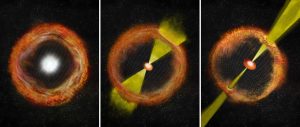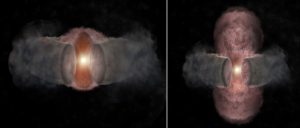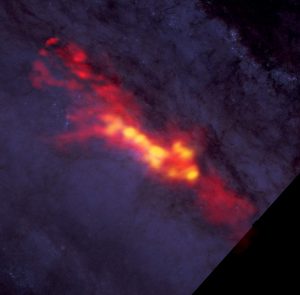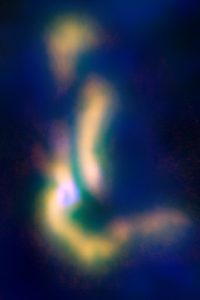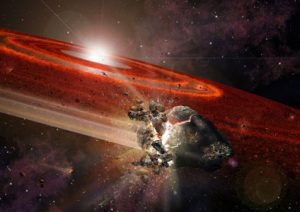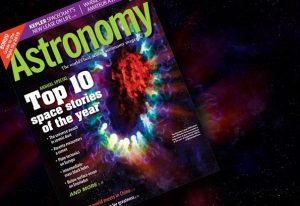Astronomers using the National Science Foundation’s Very Large Array (VLA) have found a long-sought ‘missing link’ between supernova explosions that generate gamma-ray bursts (GRBs) and those that don’t. The scientists found that a stellar explosion seen in 2012 has many characteristics expected of one that generates a powerful burst of gamma rays, yet no such burst occurred.
Astronomers Watch Unfolding Saga of Massive Star Formation
A pair of images of a young star, made 18 years apart, has revealed a dramatic difference that is providing astronomers with a unique, ‘real-time’ look at how massive stars develop in the earliest stages of their formation.
Why Do Starburst Galaxies Burst? ALMA Sees Super Stellar Nurseries at Heart of Sculptor Galaxy
ALMA dissects NGC 253 to better understand starburst.
Astronomers Catch Multiple-Star System in First Stages of Formation
For the first time, astronomers have caught a multiple-star system in the beginning stages of its formation, and their direct observations of this process give strong support to one of several suggested pathways to producing such systems.
NRAO’s Top 10 Radio Hits of 2014
Looking back at the science news released by NRAO in 2014, the staff scientists at NRAO selected what they believed were the top 10 stories based on both scientific impact and public interest.
ALMA Observations of SN 1987A Astronomy’s Top Space Story of 2014
ALMA Finding ‘Top Space Story’ of 2014






